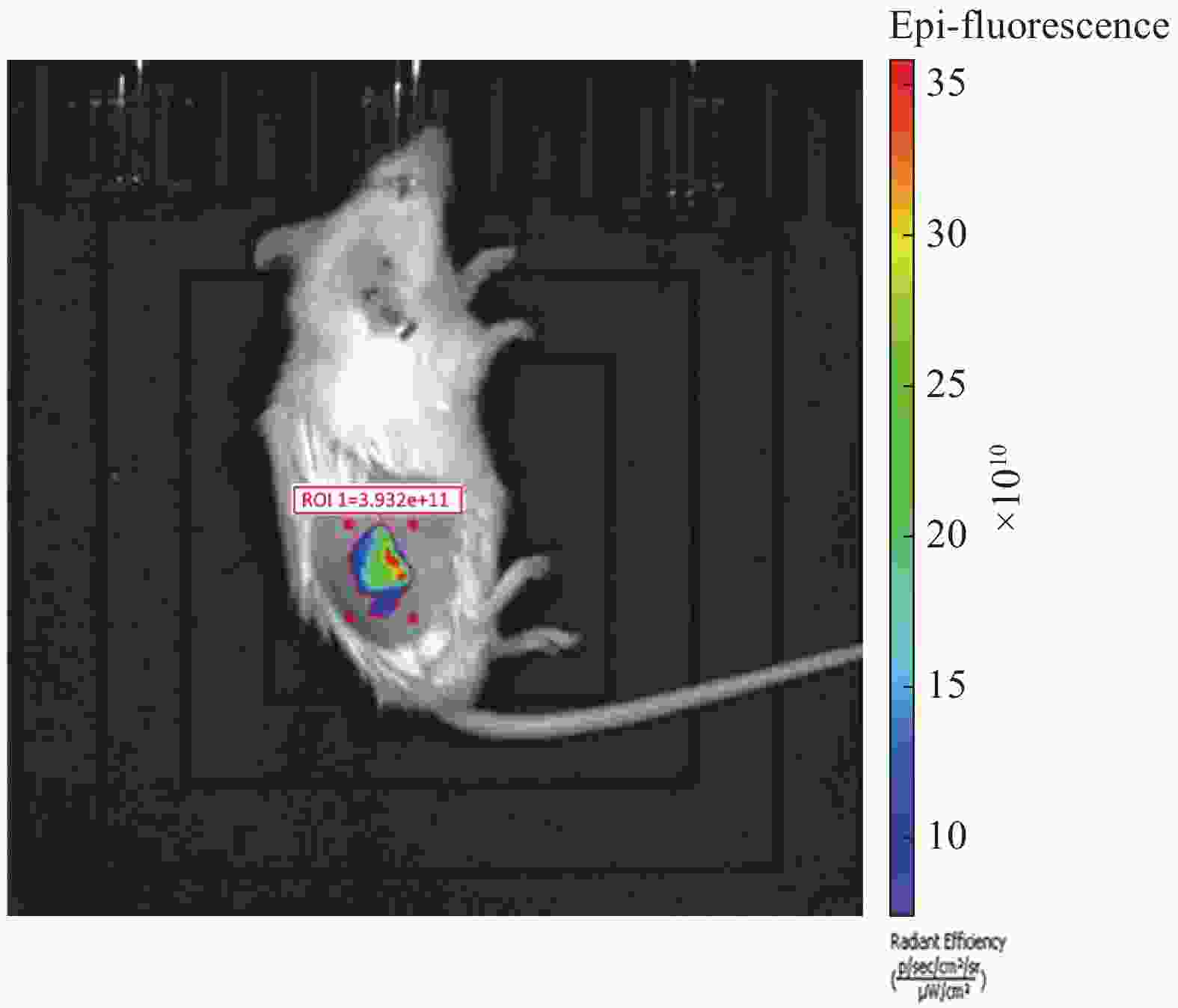| [1] |
HELLING A L, TSEKOURA E K, BIGGS M, et al. In vitro enzymatic degradation of tissue grafts and collagen biomaterials by matrix metalloproteinases: Improving the collagenase assay[J]. ACS Biomaterials Science & Engineering,2017,3(9):1922-1932.
|
| [2] |
CHU Z, ZHENG Q, GUO M, et al. The effect of fluid shear stress on the in vitro degradation of poly(lactide-co-glycolide) acid membranes[J]. Journal of Biomedical Materials Research Part A,2016,104(9):2315-2324. doi: 10.1002/jbm.a.35766
|
| [3] |
LU L, PETER S J, LYMAN M D, et al. In vitro and in vivo degradation of porous poly(DL-lactic-co-glycolic acid) foams[J]. Biomaterials,2000,21(18):1837-1845. doi: 10.1016/S0142-9612(00)00047-8
|
| [4] |
FREIER T, KUNZE C, NISCHAN C, et al. In vitro and in vivo degradation studies for development of a biodegradable patch based on poly(3-hydroxybutyrate)[J]. Biomaterials,2002,23(13):2649-2657. doi: 10.1016/S0142-9612(01)00405-7
|
| [5] |
QIU L. In vivo degradation and tissue compatibility of polyphosphazene blend films[J]. Journal of Biomedical Engineering,2002,19(2):191-195.
|
| [6] |
BERGSMA J E, ROZEMA F R, BOS R R, et al. In vivo degradation and biocompatibility study of in vitro pre-degraded as-polymerized polyactide particles[J]. Biomaterials,1995,16(4):267-274. doi: 10.1016/0142-9612(95)93253-A
|
| [7] |
YANG F H, NIU X F, GU X N, et al. Biodegradable magnesium-incorporated poly(L-lactic acid) microspheres for manipulation of drug release and alleviation of inflammatory response[J]. ACS Applied Materials & Interfaces,2019,11(26):23546-23557. doi: 10.1021/acsami.9b03766
|
| [8] |
NIU X F, LIU Z N, HU J, et al. Microspheres assembled from chitosan-graft-poly(lactic acid) micelle-like core-shell nanospheres for distinctly controlled release of hydrophobic and hydrophilic biomolecules[J]. Macromolecular Bioscience,2016,16:1039-1047. doi: 10.1002/mabi.201600020
|
| [9] |
潘永明, 金平, 徐剑钦, 等. 基于3.0 T磁共振成像系统初步观察WHBE兔脑部形态解剖结构[J]. 中国实验动物学报, 2017, 25(4):356-361.PAN Yongming, JIN Ping, XU Jianqin, et al. Preliminary observation of the anatomical structures of the brain in WHBE rabbits by 3.0 T magnetic resonance imaging system[J]. Acta Laboratorium Animalis Scientia Sinica,2017,25(4):356-361(in Chinese).
|
| [10] |
李珂, 赵光, 高春芳, 等. 小动物活体成像技术的应用进展[J]. 实用医药杂志, 2012, 29(1):81-82. doi: 10.3969/j.issn.1671-4008.2012.01.057LI Ke, ZHAO Guang, GAO Chunfang, et al. Advances in the application of in vivo imaging technology[J]. Practical Journal of Medicine & Pharmacy,2012,29(1):81-82(in Chinese). doi: 10.3969/j.issn.1671-4008.2012.01.057
|
| [11] |
赵年欢, 崔邦平, 王朋, 等. 生物发光成像示踪干细胞移植的应用进展[J]. 巴楚医学, 2018, 1(1):125-128.ZHAO Nianhuan, CUI Bangping, WANG Peng, et al. Advances in the application of bioluminescence imaging tracing in stem cell transplantation[J]. Bachu Medical Journal,2018,1(1):125-128(in Chinese).
|
| [12] |
GONDI C S, VEERAVALLI K K, GORANTLA B, et al. Human umbilical cord blood stem cells show PDGF-D-dependent glioma cell tropism in vitro and in vivo[J]. Neuro Oncology,2010,12(5):453-465.
|
| [13] |
柴凡, 周耘裔, 肖庚富. 活体生物发光成像技术及其在病毒感染研究中的应用[J]. 微生物学报, 2011, 51(4):431-437.CHAI Fan, ZHOU Yunyi, XIAO Gengfu. Bioluminescence in-vivo imaging technology and its application in the study of viral infection-A review[J]. Acta Microbiologica Sinica,2011,51(4):431-437(in Chinese).
|
| [14] |
GUTOWSKI M B, WILSON L, VAN GELDER R N, et al. In vivo bioluminescence imaging for longitudinal monitoring of inflammation in animal models of uveitis[J]. Investigative Ophthalmology & Visual Science,2017,58(3):1521-1528.
|
| [15] |
YANAGIHARA K, TAKIGAHIRA M, TAKESHITA F, et al. A photon counting technique for quantitatively evaluating progression of peritoneal tumor dissemination[J]. Cancer Research,2006,66(15):7532-7539. doi: 10.1158/0008-5472.CAN-05-3259
|
| [16] |
IYER M, SALAZAR F B, WU L, et al. Bioluminescence imaging of systemic tumor targeting using a prostate-specific lentiviral vector[J]. Human Gene Therapy,2006,17(1):125-132. doi: 10.1089/hum.2006.17.125
|
| [17] |
MA T C, HOU Y, ZENG J F, et al. Dual-ratiometric target-triggered fluorescent probe for simultaneous quantitative visualization of tumor microenvironment protease activity and pH & ITin vivo & IT[J]. Journal of the American Chemical Society,2018,140(1):211-218. doi: 10.1021/jacs.7b08900
|
| [18] |
CHOI H S, GIBBS S L, LEE J H, et al. Targeted zwitterionic near-infrared fluorophores for improved optical imaging[J]. Nature Biotechnology,2013,31(2):148-153. doi: 10.1038/nbt.2468
|
| [19] |
CHOI K Y, CHUNG H, MIN K H, et al. Self-assembled hyaluronic acid nanoparticles for active tumor targeting[J]. Biomaterials,2010,31(1):106-114. doi: 10.1016/j.biomaterials.2009.09.030
|
| [20] |
WINNARD P T, KLUTH J B, RAMAN V. Noninvasive optical tracking of red fluorescent protein-expressing cancer cells in a model of metastatic breast cancer[J]. Neoplasia,2006,8(10):796-806. doi: 10.1593/neo.06304
|
| [21] |
ZOU P, XU S, POVOSKI S P, et al. Near-infrared fluorescence labeled anti-TAG-72 monoclonal antibodies for tumor imaging in colorectal cancer xenograft mice[J]. Molecular Pharmaceutics,2009,6(2):428-440. doi: 10.1021/mp9000052
|
| [22] |
赵小亮, 刘曦, 杨忆, 等. 利用活体成像技术研究海茸β-1,3/1,6-葡聚糖在小鼠体内的分布[J]. 高等学校化学学报, 2017, 38(8):1368-1374.ZHAO Xiaoliang, LIU Xi, YANG Yi, et al. Detection of animal tissue distribution of β-1,3/1,6-Glucan from durvillaea antarctica by in vivo imaging[J]. Chemical Journal of Chinese Universities,2017,38(8):1368-1374(in Chinese).
|
| [23] |
MANNI I, DI ROCCO G, FUSCO S, et al. Monitoring the response of hyperbilirubinemia in the mouse brain by in vivo bioluminescence Imaging[J]. International Journal of Molecular Sciences,2017,18(1):50.
|
| [24] |
LIAO A H, LI Y K, LEE W J, et al. Estimating the delivery efficiency of drug-loaded microbubbles in cancer cells with ultrasound and bioluminescence imaging[J]. Ultrasound in Medicine and Biology,2012,38(11):1938-1948. doi: 10.1016/j.ultrasmedbio.2012.07.013
|
| [25] |
HAN X J, WEI Y F, WAN Y Y, et al. Development of a novel liposomal nanodelivery system for bioluminescence imaging and targeted drug delivery in ErbB2-overexpressing metastatic ovarian carcinoma[J]. International Journal of Molecular Medicine,2014,34(5):1225-1232. doi: 10.3892/ijmm.2014.1922
|






 下载:
下载:












